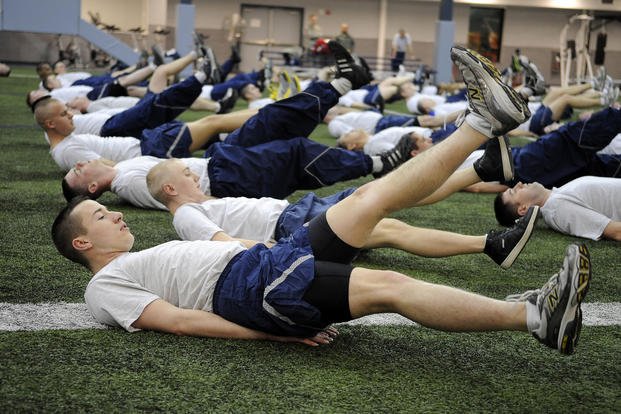A young Navy airman requested information on working on swimming while not having access to a pool. I get this one often as many people like to do the running and PT sections of my workouts, but lack swimming abilities or facilities.
Here is what he writes:
"I am deploying in June to Afghanistan. I want to go to BUD/S when I get back. What should I do about swimming? 6-8 months in the desert. I don't think I will be getting in a pool during that. How do I train without losing a significant amount of time on my swim? Any guidance would be
appreciated. Thanks."
Swimming on deployment is always a tough one for active-duty Navy preparing for BUD/S.
I would focus on the muscle endurance needed for swimming:
Back muscles, biceps, shoulders and triceps for upper-body workouts that will build endurance and strength is what is needed primarily for swimming.
However, do not forget the legs, especially at BUD/S, where 99% of your swims will be done with fins. So use your hips and legs for flutter-kick endurance. You do not need power or strength so lay off the heavy weights. High-rep endurance is needed for long ocean swims.
A good workout that mixes in both is the following: I would focus on pull-ups and resting with four-count, flutter-kick workouts for endurance:
Repeat five times.
- Max rep pull-ups
- Rest with 50 flutter kicks
- Rest with 40-50 push-ups
- (Shoot for a goal of 100 pull-ups in five sets eventually)
- Do a few lightweight shoulder routines as well within the five supersets.
If you have access to a weight room:
Bentover rows are a great exercise for working on swimming muscles of the back and biceps. It again should be done with moderate weight and high reps (15-20 reps per set), and it also will help you with your pull-ups.
Multiple rep (15 ) circuits of biceps curls, pulldowns, triceps pushdowns, abdominals, lower back and other isolation exercises are needed, too. But the best way to get better at swimming without a pool is to perform the swimming movements as much as you can, perhaps using rubber bands secured to a tree or door knob.
Other forms of cardio:
Besides technique and knowing how to swim, cardiovascular endurance is the number one issue while swimming. So if possible, run, bike on stationary bikes, row on rowing machines or even use elliptical glide machines if you need a break from the impact of running. All of those options will improve your cardio endurance conditioning.
Most importantly, hunt for a pool. If you get any time, find a beach, lake, pool or any type of safe water to swim in. Swimming and being comfortable in the water are critical for any type of Special Ops training, like Navy SEALs, Air Force PJ, dive school, USMC RECON, etc.
More Special Operations articles:
- Army Special Operations
- Navy Special Operations
- Air Force Special Operations
- Marine Corps Special Operations
- All Special Operations Articles
More swimming articles:
- Helicopter Rescue Swimmer Training
- Popular Swimming Pool Workouts
- Rescue Swimmer Fitness Standards
- Summer Swimming Workouts
- Swimming With Fins
- Video: The Combat Swim
- The Combat Swim
- Passing Military Swimming Tests
Stew Smith is a former Navy SEAL and fitness author certified as a Strength and Conditioning Specialist (CSCS) with the National Strength and Conditioning Association. Visit his Fitness eBook store if you're looking to start a workout program to create a healthy lifestyle. Send your fitness questions to stew@stewsmith.com.
Want to Learn More About Military Life?
Whether you're thinking of joining the military, looking for fitness and basic training tips, or keeping up with military life and benefits, Military.com has you covered. Subscribe to Military.com to have military news, updates and resources delivered directly to your inbox.



















